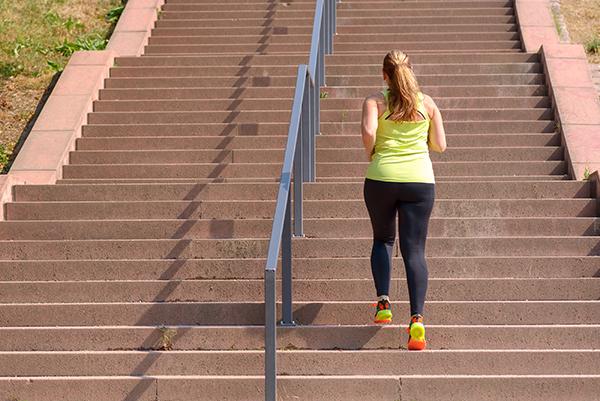Exercise is the best way to slim down, but which style of exercise is right for you?
Decisions, decisions.
When you get serious about losing weight and getting healthy, you’ll find a world of options waiting. Two of the best are high-intensity interval training (HIIT) cardio and lifting weights. Which one should you try?
If you’re not familiar with the term, HIIT cardio involves short bursts of high-intensity exercise, followed by periods of lower-intensity training. Until recently, most people relied on steady-state cardio—treadmill, stair climber, elliptical or bike training—to get their heart rates up. HIIT began to gain popularity after it was rated the No. 1 fitness trend by the American College of Sports Medicine, leaving the old standby—weight training—in the dust. Is HIIT really better?
What’s the difference between HITT and weight training?
According to Dr. Beau Gedrick, a primary care sports medicine physician at Augusta University Health, the answer is, “It depends.” Each method allows you to burn the same amount of fat, he noted, but they affect the body in different ways. “Both types of training can be considered a ‘whole body’ workout,” Dr. Gedrick said, “with weight training resulting in more muscular isolation and HIIT using more muscle groups as a whole.”
Dr. Gedrick explained that both of the methods help build strength and endurance, but the potential of building bulkier muscles is greater with weight training. Although lifting weights doesn’t burn much fat by itself, building more muscle mass automatically helps increase metabolism. “That means you can burn fat more efficiently, because your body is working for you even when you’re not working out, as long as you maintain that higher level of muscle mass,” Dr. Gedrick said.
What are the drawbacks?
There’s a learning curve to negotiate with each type of training, Dr. Gedrick noted: “It may be a steeper slope when it comes to the cardiovascular effects of HIIT, depending on your initial level of fitness when you start this type of training. On the other hand, weight training also requires learning a significant amount of technique before you can start increasing the amount of weight you can lift. That can result in limited potential gains in the early going.”
The deciding factor in which type of training you select may depend on your physical condition.
“Each workout routine has its own drawbacks, which are really person-specific. High-intensity interval training can be problematic for people who suffer from arthritic joint pain, or have other difficulties with high-impact activities,” Dr. Gedrick said.
In the end, the choice may well come down to which type of training you like better. As always, the best exercise is the one you’ll actually stick with.
Get moving.
Augusta University Jaguar Sports Medicine is a leader in preventing and treating sports-related injuries for the athlete in all of us. Our focus is as much on prevention as it is treatment, whether you have a complex, multi-ligament knee injury or a simple sprain or strain. Make an appointment by visiting augustahealth.org/sports-medicine or call (706) 721-2741.
The Augusta University Ortho On-Demand clinic also provides walk-in care treating those with sports, work and home-related injuries. Call 706-721-2741 for any questions or learn more at augustahealth.org/ondemand. No appointments or referrals required. Hours: Monday through Thursday 1 p.m. to 8 p.m. and Friday 1-4 p.m.
This content was originally published here.









